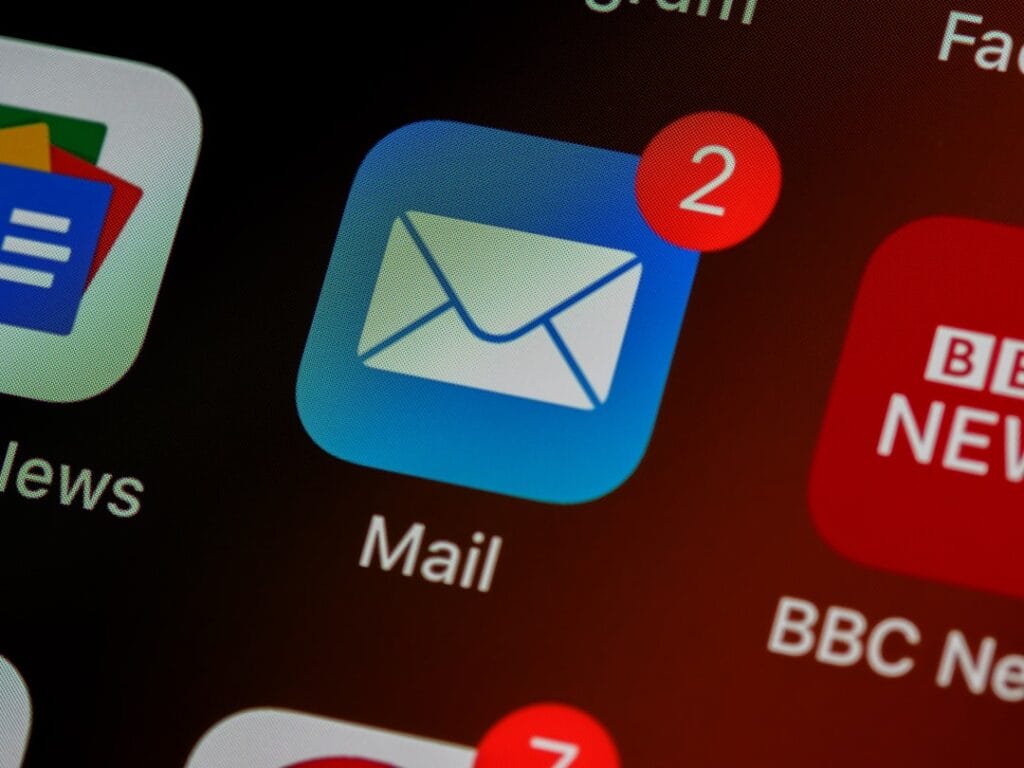Segmenting your prospecting email list is essential for targeted prospecting. This allows you to send relevant messages to each segment of your audience.
Indeed, segmented campaigns can increase your opening rates by 203 % and your turnover by 760 % . You thus improve the commitment and efficiency of your email marketing campaigns.
To get started, identify the segmentation criteria that are relevant to your audience. Then, use suitable tools to implement this strategy.
Segment prospecting email list
Understanding email segmentation

To segment your email prospecting list effectively, you must first understand what email segmentation is. Segmentation involves dividing your subscriber list into smaller groups, based on specific criteria. These criteria may include demographics, purchasing behaviors, or personal preferences. By segmenting your list, you can send more personalized and relevant messages to each group.
“Indeed, to refine your strategy, segmentation and personalization are essential. " - Email marketing expert
This in-depth personalization encourages your prospects to interact more with your business. This allows you to increase engagement and improve the results of your email campaigns.
Why segmentation is crucial for prospecting
Segmentation plays a crucial role in prospecting. It allows you to target your messages more precisely, which increases the chances that your emails will be opened and read. Here are some reasons why segmentation is essential:
Increased engagement : Segmented emails have a higher open rate. Recipients feel more engaged with messages that meet their specific needs.
Improved conversions : By tailoring your offers to the needs of each segment, you increase the likelihood of converting your prospects into customers.
Reduced unsubscribes : A relevant message reduces the chances of your subscribers unsubscribing or marking your emails as spam.
By segmenting your prospecting email list, you optimize your marketing efforts. You send the right message, at the right time, to the right person. This results in more targeted and effective prospecting.
Segmentation criteria

To segment prospecting email list effectively, it is crucial to choose the right criteria . These criteria allow you to create homogeneous and relevant groups, thus facilitating the sending of personalized messages. Here are the main types of segmentation you can use:
Demographic segmentation
Demographic segmentation is based on characteristics such as age, gender and location. This information helps you tailor your content to the specific needs of each group.
Age : Preferences often vary across age groups. For example, younger adults may be more receptive to technology offerings, while seniors may prefer health products.
Gender : Campaigns can be adjusted to better meet the expectations of men and women. For example, a clothing brand may offer separate collections for each gender.
Location : Geography influences needs and preferences. You can target region-specific offers, like local events or seasonal promotions.
Behavioral segmentation
Behavioral segmentation is based on purchase history and previous interactions. It allows you to understand how your prospects interact with your brand.
Purchase History : Identify loyal customers and offer them exclusive offers. For example, a customer who purchases regularly may receive special discounts.
Previous interactions : Analyze clicks and email opens to determine engagement. A prospect who interacts with your emails often may be interested in more detailed content or premium offers.
Psychographic segmentation
Psychographic segmentation focuses on the interests, values and lifestyles of your prospects. It helps you create messages that resonate emotionally with your audience.
Interests : Offer content related to your prospects’ passions. For example, a sports fan might enjoy articles on the latest sports trends.
Values : Adapt your messages to reflect the values of your audience. An eco-responsible company can target customers who are sensitive to environmental issues.
Lifestyle : Understand the lifestyle of your prospects to better target them. For example, a luxury brand may appeal to those looking for high-end products.
By using these segmentation criteria, you can segment your prospecting email list more accurately and effectively. This allows you to send relevant and personalized messages, increasing engagement and conversions.
READ ALSO: Understanding and mastering market segmentation in B2B marketing
Implement segmentation

To effectively segment your email lists, you need to use the right tools and techniques. These tools help you organize your contacts into homogeneous groups, making it easier to send personalized and relevant messages.
Segmentation tools and techniques
Use of CRM software
CRM (Customer Relationship Management) software is essential for successful segmentation. They allow you to collect and analyze data about your contacts, such as their past interactions, preferences and purchasing behaviors. Here's how you can use them:
Data Collection : Record all interactions with your prospects and customers. This includes emails opened, link clicks, and purchases made.
Behavior Analysis : Identify trends and recurring behaviors among your contacts. For example, a customer who regularly purchases similar products can be targeted with personalized offers.
Creating segments : Use collected data to create segments based on specific criteria. This allows you to send messages tailored to each group.
Integration with emailing platforms
Integrating your CRM with emailing platforms optimizes your segmentation strategy. These platforms make it easy to send targeted and automated campaigns. Here are some advantages:
Campaign automation : Schedule the sending of emails based on the actions of your contacts. For example, a welcome email can be sent automatically to a new subscriber.
Personalization of messages : Adapt the content of your emails according to segments. Use dynamic variables to insert the recipient's name or product recommendations.
Performance monitoring : Analyze the results of your campaigns to adjust your segments and improve the effectiveness of your emails.
Magileads Segmentation Features
Magileads offers advanced features to segment your email lists accurately and efficiently. Here's how you can take advantage of this tool:
How to use Magileads to segment your lists
Segmentation criteria : Create segments based on criteria such as industry , company size, or location. This allows you to target your messages more precisely.
Advanced personalization : Use the Spintax feature to personalize your messages without writing each email manually. This saves you time while increasing the relevance of your communications.
Specific advantages of Magileads
Fine segmentation : Thanks to precise segmentation , you can target your messages and increase their relevance. This improves engagement and conversion rates.
Advanced options : Magileads allows you to create segments based on specific behaviors , such as previous purchases or interactions with your website. This helps you better understand your prospects and tailor your campaigns accordingly.
↗️ Discover in video how Magileads can take your agency to the next level:
By using these tools and techniques, you can implement an effective segmentation strategy. This allows you to send personalized messages to each segment, increasing engagement and conversions of your email campaigns.
Practical examples of successful segmentation
Segmenting prospecting emails can turn your marketing campaigns into real successes. By tailoring your messages to the specific needs of each segment, you significantly increase engagement and conversions. Here are some concrete examples of segmented campaigns that have borne fruit.
Segmented Campaign Case Studies
Fashion e-commerce : An online clothing store has segmented its customers based on their purchase history and purchase frequency. Loyal customers received exclusive offers and previews of new collections. Result: a 30% increase in monthly sales.
SaaS (Software as a Service) : A software provider used behavioral segmentation to target inactive users with tutorials and user guides. This approach enabled 20% of inactive users to be reactivated, thereby increasing the retention rate.
Health and well-being sector : a wellness brand has segmented its subscribers according to their lifestyle. Active subscribers have received fitness advice, while those interested in mindfulness have received relaxation techniques. This personalization has led to a 40 % increase in the opening rate of emails.
Results obtained through effective segmentation

Prospecting email segmentation is not limited to increasing sales. It also improves customer experience and builds brand loyalty. Here are some concrete results obtained through effective segmentation:
Increase in opening rates : Segmented campaigns can increase your opening rates by 203 % . The recipients feel more concerned with messages that meet their specific needs.
Improved Revenue : Marketers who use segmented campaigns see a 760% in revenue. By adapting your offers to the needs of each segment, you maximize your chances of conversion.
Reduced unsubscribes : A relevant message reduces the chances of your subscribers unsubscribing or marking your emails as spam. You thus maintain an engaged and receptive contact base.
By applying these segmentation strategies, you can transform your prospecting email campaigns into real growth levers. You send the right message, at the right time, to the right person, which results in more targeted and effective prospecting.
Tips for optimizing segmentation
Optimizing the segmentation of your email lists is essential to maximizing the effectiveness of your prospecting campaigns. Here are some practical tips to help you refine your strategy.
Best practices for continuous segmentation
Update your segments regularly : The preferences and behaviors of your prospects evolve. Be sure to review and adjust your segments regularly to keep them relevant. For example, if a customer changes location, adapt your geographic segment accordingly.
Use keywords to refine the segmentation : as made by Joueclub , integrate specific keywords to target brands or universes of special products. This allows you to precisely define the interests of each segment and send more targeted messages.
Test and analyze your segments : Perform A/B testing to evaluate the effectiveness of your segments. Analyze the results to identify the segments that generate the most engagement and conversions. Adjust your segmentation criteria based on the data collected.
Integrate segmentation into your platform : Make sure your emailing platform or CRM includes advanced segmentation features. This makes it easier to manage and continuously optimize your segments.
Avoiding Common Mistakes in Segmentation
Don't segment too much : Excessive segmentation can make it difficult to manage your campaigns. Find a balance between segment granularity and manageability. Too many segments can dilute your efforts and make your campaigns less effective.
Avoid segments based on outdated data : Always use up-to-date data to create your segments. Outdated information can lead to inappropriate messages and lower engagement.
Don't neglect results analysis : Don't just segment your lists. Regularly analyze your segment performance to identify opportunities for improvement. Open, click, and conversion rates are key metrics to track.
Don’t underestimate the importance of personalization : Even with effective segmentation, personalization remains crucial. Adapt the content of your emails to the specificities of each segment to maximize the impact of your messages.
By following these tips, you can optimize the segmentation of your prospecting email lists. This will allow you to send more relevant and personalized messages, thus increasing the engagement and conversions of your campaigns.
Emailing segmentation turns out to be a powerful tool to optimize your prospecting campaigns. By cutting your audience into homogeneous subsets , you can create more relevant messages adapted to each recipient. This significantly increases your return on investment (king) by personalizing your communications.
Apply these techniques to improve your results and increase prospect engagement. Magileads features for even more precise and efficient segmentation. You will discover how to transform your prospecting email campaigns into real growth levers.
—————————
Magileads is prospecting automation software that allows you to easily manage all the complex aspects of your marketing processes.
Test Magileads for free in 14 days. Click here .
Or book a demo to see how it works. Click here .
See also
Top 10 Emailing Tools for Prospecting 2024
Choosing Between Email or LinkedIn for B2B Prospecting
Essential Process for Generating Qualified Leads





